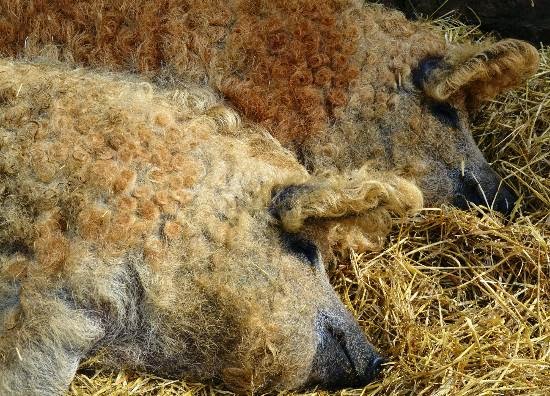 |
| Holy Trinity Church |
 |
| Inner view |
 |
| Shakespeare's tomb in chancel |
 |
| Shakespeare's Coat-of -arms |
 |
| The Font for Baptism |
 |
| Shakespeare's funerary monument |
After leaving the New Place we
proceeded to see the Holy Trinity church situated in the Chapel Street where
Shakespeare and his family members found their last resting place. This parish
church is one of the most ancient churches in England. Its name was first
mentioned in the charter of 845 A.D. signed by Beorhtwulf (Bertulf), king of
Mercia, perhaps a wooden construction at that time. Later the Normans
constructed a stone building. But no trace of these two constructions remains
now. The present limestone building was constructed in the shape of a cross in
1210 by Hugh Clopton, a native of Stratford, who later became the Mayor of
London. He also constructed the well-known Clopton bridge over the river Avon
in 1480. The town guild maintained the church till 1330. Henry VIII suppressed
the guild and gave their assets to the town council. Some of the carvings,
chantry and the rood screen were destroyed by the zealous reformers of
religion. Hugh Clopton re-built the chapel of the Guild of the Holy Cross and
raised the roof and re-built the nave
with side aisles. He also had a magnificent tomb built for himself in the then
Lady chapel (later named Clopton Chapel) with beautiful carvings. But he died in London in 1496 and was buried
in the parish church of St.Margaret, Lothbury. The descendants of his family,
George Carew and his wife Joyce Clopton were buried in that tomb. The church
compound gave a serene and pious atmosphere with rows of trees planted on both
sides with many tombs seen here there with worn out inscriptions and with
various sculptured figures in different sizes and shapes. The interior of the
church seemed very grand with stained glass windows, paintings and sculptures.
In the church we can see the old register in which Shakespeare’s date of baptism
(26rd April, 1564) and burial (25th April.1616) were
recorded in quaint Elizabethan handwriting. Shakespeare purchased a part of the
income privileges (tithes) of the church for 440 pounds in 1605. Thus he got
the right of being buried in the chancel in the interior part of the church
just behind the pulpit. This right of burial was inherited by his family
members. His wife, Ann Hathaway, his elder daughter, Susanna, his sons-in-law,
John Hall and Thomas Nash were buried in the chancel. His granddaughter,
Elizabeth, who married Barnard, died and was buried in Abington church in 1670.The
tombs looked quite simple and plain without much sculpturesque decoration. The
epitaph on the tomb with a note of gentle warnings says:
“Good friend for Jesus sake forbear
To dig the dust enclosed here
Blessed be the man that spares
these stones
And cursed be he that moves my
bones.”
To the left of Shakespeare’s bust
there is another porch wherein we can the busts of William Clopton (1538-1592)
and his wife Ann. William Clopton was the great grandson of John Clopton,
younger brother of Hugh Clopton .On the table there is a bulky Bible chained to
the desk just for the visitors to have a glance at it. The bard had read the
same book whenever he came for prayers. We can also see the stone font which
was used for baptism. Shakespeare might have been baptized with the holy water
from the same font. We can also see the twenty-six beautiful wooden carvings
called misericords or mercy seats(small wooden shelves or ledges artistically
carved, fixed on the underside of folding seats to provide support to persons
who stand during prayers for a long period) depicting the scenes of daily life
and the pictures of mermaids, mermen and unicorns. Again we have to thank Hugh
Clopton who liberally contributed for the renovation and beautification of this
church. We can see the bust of Shakespeare just above to the left of
Shakespeare’s tomb in a porch. This was commissioned by Ann Hathaway in 1623
and so it is certain that the carved bust looked similar to the poet in
appearance. Just above the porch Shakespeare’s family’s coat-of-arms was carved.
Gerard John made this bust probably based on Shakespeare’s death mask. All the
members of Shakespeare’s family had been buried in this church premises except
his brother Edmund,who went to London as a professional actor and died at the
age of twenty-seven in 1607. His tomb is seen in the church of St.Mary Overy,
where John Fletcher and Philip Massinger, dramatists for Kings’ Men, were
buried in later times.
As we came out, the shady rows of
trees, the wide porch and tall stained windows with paintings cast a deep and
moving impression on our minds. We felt a sense of sacred touch and Shakespeare,
himself, might have felt alike whenever he visited this place after his hectic
schedule in London or during his later leisurely life after leaving his career as a
playwright.
++++++++++++++++++++++++++++++++++++++++
10th May, 2014 Somaseshu Gutala





























































